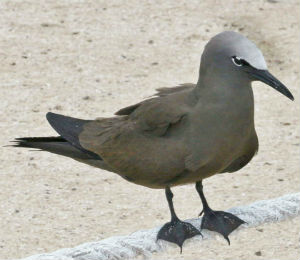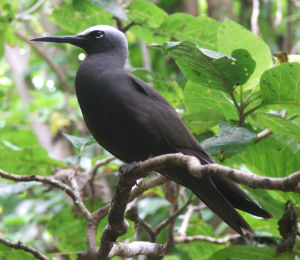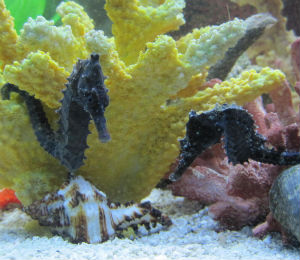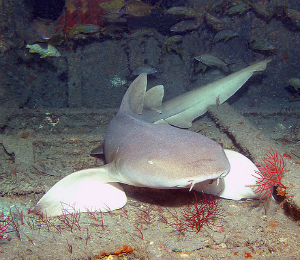The Florida Keys is a bird-watcher’s paradise, and with the presence of the Brown Noddy, we can see why. The graceful tern, and the largest of the noddies, can be found worldwide in tropical climates. But here on the Dry Tortugas, bird-watchers can get close to the beautiful birds and learn quite a bit about their behavior.
Birds of Key West: The Brown Noddy
The Brown Noddy is perhaps named for the bowing and nodding ritual performed during courtship and breeding. Pairs are often seen flying swiftly before they nest together. When they aren’t nesting, Brown Noddies take to the sea, roosting anywhere it can, including flotsam, and have even been spotted roosting on the backs of sea turtles.
The population of the Brown Noddy is in the “least concern” category, and it is thought to have a stable population worldwide. On the Dry Tortugas, the noddies can find safe nesting areas next to the restricted areas where the Sooty Terns nest.
Brown Noddy: What to Look For
The Brown Noddy, Anous stolidus, is a tern of a different color. It has a dark body with a white forehead and cap, and it’s tail is wedge-shaped instead of a typical tern’s forked tail. With a wingspan 29-34 inches, and a body length of up to 18 inches, the noddies are fairly easy to spot soaring high above the water.
These chocolate-colored birds have black-tipped wings and a dark tail, and their legs, feet and bill are the darkest of brown. Females are lighter in coloring and a tad smaller than the males, and juveniles have pale feathers on the upper parts of their bodies.
Habitat: Where to Find the Brown Noddy
The Brown Noddy can be found across the tropical seas of the world, including areas surrounding Key West. The Dry Tortugas of the Florida Keys is a perfect place to spot the Brown Noddy. The noddy population was booming in the 18th and 19th centuries, and although its numbers have dropped, the population of the species is stable and not endangered.
Warm water and tropical climates attract the Brown Noddy, and as a seabird, it rarely is found on mainland or coasts. It prefers rocky, vegetation-covered tropical islands for nesting and breeding. However, tropical storms have been known to push the Brown Noddy to larger coasts to wait out the storm.
If you’re on the Dry Tortugas in search of the Brown Noddy, you can try following the noisy calls of the Sooty Tern, as Brown Noddy colonies are found nesting next to the innumerable Sooty Tern colonies. While the Sooty Tern prefers open, sandy areas, the Brown Noddy nests in vegetation, such as bay cedar or cactus. They also nest on high, rocky cliffs, and use sticks, seaweed, rocks and coral to line their nests. The Brown Noddy is a unique tern, reusing nests year after year, but adding to the nests so that they continue to grow in size.
Brown Noddy Diet & Eating Habits
Like other terns, the Brown Noddy hunts at sea. It makes very shallow dives to snatch fish near the surface of the water or in shallow water. However, unlike some terns, the Brown Noddy does not plunge deep into the water and instead allows other predators to push the fish toward the surface for easy hunting. The terns found on the Dry Tortugas provide a unique look at socialization of the Brown Noddy. Here, you can find groups of terns hunting together on the water.
The Brown Noddy prefers very small fish that travel in large schools. When hunted, these smaller fish form a tight sphere to protect themselves, but as the larger fish hunt from below, pushing the sphere toward the surface of the water, the Brown Noddy capitalizes on the opportunity to hunt from above, swooping in and snatching the small fish.
Key West Snorkeling, Glass Bottom Boat Tours, and Bird-Watching
Millions of people visit the area each year to enjoy Key West snorkeling, but while you’re here, we urge you to get the most out of your trip. Enjoy the sun, sand and water on our snorkeling trips, book passage on our glass bottom boat tours to see the coral reefs and plethora of sea creatures lurking in the water, and head to the Dry Tortugas for an ecological adventure you won’t want to miss. And that includes, of course, watching for the Brown Noddy.




